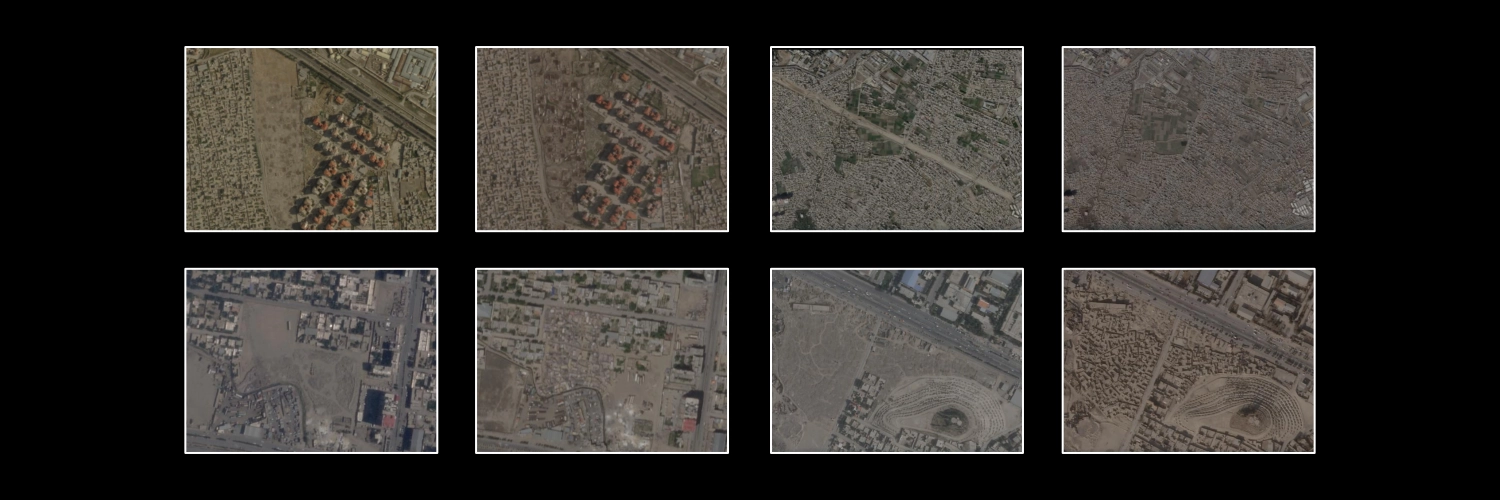
Inside the Taliban’s demolition campaign in Kabul
Mapping the Taliban’s demolitions: the darker side of their development drive
Satellite imagery analysis reveals that the Kabul Municipality cleared over 1.5 million square metres of land in the Afghan capital between 15 August 2021 and 15 August 2024, leaving thousands of families homeless.
The authorities say they are combating land grabbing, returning displaced communities to their homes and investing in infrastructure projects.
However interviews with residents, humanitarian organisations and urban planning experts reveal a darker side of the development efforts: homes bulldozed with children still inside and vulnerable communities paying the price.
Partners at the Centre for Information Resilience’s Afghan Witness project found a third of the total area of land demolished impacted informal settlements. Typically home to Internally Displaced Persons (IDPs) and displaced Afghans returning from neighbouring countries, these settlements house some of Afghanistan’s poorest communities.
Outside of informal settlements, the investigation found large-scale residential demolitions appeared to be impacting areas that are predominantly home to ethnic minorities. For example, Police District 13, a predominantly Hazara district, lost the largest area of residential homes to demolitions since 2021 compared to other police districts in Kabul.
Residents say fear has prevented them from protesting the demolitions.
“Most of these plans were part of previous government plans, but they were unable to be implemented because they couldn’t force people to evacuate the area,” said Fakhrullah Sarwari, an urban planning researcher who worked with the former Afghan government.
“But now the Taliban doesn’t care about that.”
METHODS
Our partners at the Centre for Information Resilience’s Afghan Witness project analysed videos showing demolitions and development projects across the city. Many of these had been uploaded by the Kabul Municipality itself.
The team geolocated the videos and scoured satellite imagery to confirm demolitions and identify new sites destroyed. The data was mapped and then analysed to spot trends in where demolitions were occurring and who was being impacted.
Etilaat Roz and Zan Times began interviewing people from the sites identified. The reporters collected testimonies from a dozen residents who provided disturbing accounts of the demolitions themselves and described the turmoil that followed their evictions.
Interviews with urban planners, humanitarian organisations and former government workers helped contextualise the demolitions and confirmed trends spotted in the data analysis.
STORYLINES
Ahmadullah*, who lived in an informal settlement in PD 4, described being woken up as homes were being demolished one morning in August 2024.
“I woke up with kids crying around me… My nephew came by, crying that her mom and brother were inside the house and the bulldozer was demolishing it,” he said.
Another resident from a demolition, where the NRC reported the deaths of two children in July 2023, also described scenes of mayhem.
“Women, children and elderly men were begging for them to stop the destruction until we can find a shelter, but they wouldn’t listen…They had pipes and sticks in their hands and they wouldn’t let anyone say a single word,” he told reporters.
While the Taliban have reportedly said residents of informal settlements can return to their place of origin, those we interviewed remained in Kabul in precarious living situations.
Without the money to rent a house in the nearby areas, Ahmad** is now living in an abandoned factory. His house was home to nearly 50 family members. He claims a Taliban official had promised them shelter, but so far, there has been nothing.
“We don’t even have tents, we have just shelters that we made from plastic pieces…For some days, we don’t have anything to eat, we sleep with an empty stomach.”

